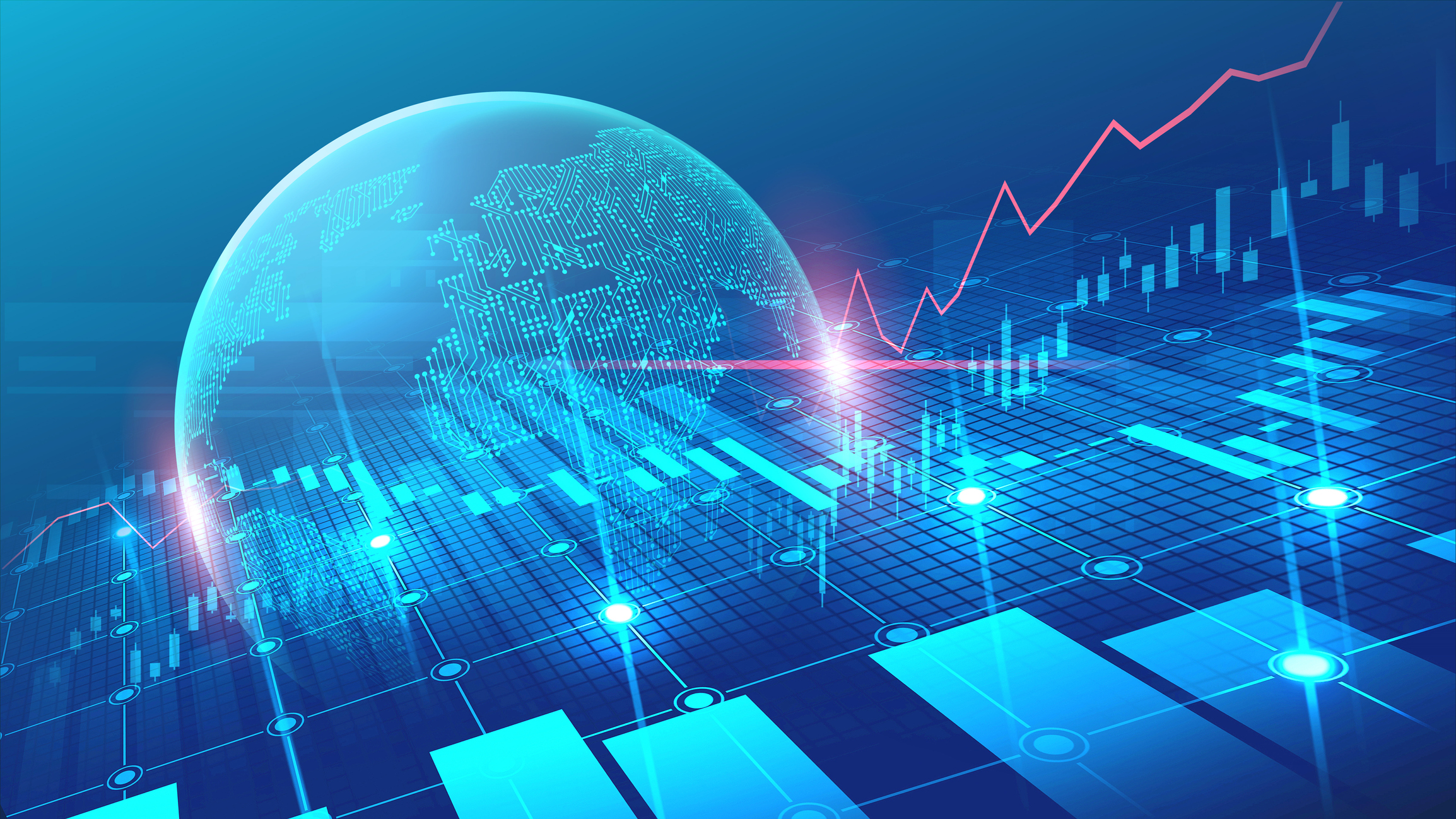13 Great Funds for Income in Retirement
Our picks cover the gamut, from retirement-income funds to preferred stocks and dividend-paying common stocks.

Ah, retirement. No more deadlines, endless meetings or conference calls—you’re finished with the working life. But that also means no more paycheck. Now one of your biggest financial worries is how to convert your nest egg into an income stream.
See Also -- SLIDE SHOW: Explore the Kip 25 Funds
Accomplishing that mission shouldn’t require a radical restructuring of your investments, but some fine-tuning may be in order. We’ll run through the kinds of assets you can tap to generate steady income, the risks that come with each one and the yield you can currently expect—and we’ll recommend specific mutual funds and exchange-traded funds to get you started. Bear in mind that you won’t be able to achieve your income goal with just one kind of investment. Rather, you’ll need to build a diversified portfolio of different kinds of assets.
Retirement income funds
What they are: These all-in-one funds, which are designed for investors already in retirement, generate income as well as some capital appreciation. They are often the last stop in the glide path—the portfolio’s shift in asset allocation over time—of most target-date funds. For instance, if you invest in Vanguard Target Retirement 2030 (symbol VTHRX), a mutual fund designed for people planning to retire around that year, and you stick with it after you retire, your money will end up in Vanguard Target Retirement Income (VTINX) seven years after the target date, when the series’ glide path officially stops shifting.
From just $107.88 $24.99 for Kiplinger Personal Finance
Become a smarter, better informed investor. Subscribe from just $107.88 $24.99, plus get up to 4 Special Issues

Sign up for Kiplinger’s Free Newsletters
Profit and prosper with the best of expert advice on investing, taxes, retirement, personal finance and more - straight to your e-mail.
Profit and prosper with the best of expert advice - straight to your e-mail.
These days, Target Retirement Income holds five funds, four of which are the firm’s biggest index funds: Total Stock Market (VTSMX), Total Bond Market (VBMFX), Total International Stock Market (VGTSX) and Total International Bond Market (VTIBX). The fifth fund is Vanguard Short-Term Inflation-Protected Securities Index Fund (VIPSX), an actively managed bond fund that invests in Treasury inflation-protected securities. All told, Target Retirement Income has 70% of its assets in bonds and 30%% in stocks. It returned 5.2% annualized over the past 10 years, and it currently yields 2.0%. (Returns and yields are as of April 11.)Risks: Though retirement income funds are conservative, they are vulnerable to all the usual risks associated with owning stocks and bonds.
Dividend growth stocks
What they are: Shares of companies with a long track record of consistently raising their dividends. Stocks in these kinds of firms have held up better than Standard & Poor’s 500-stock index in past market downturns, according to a new study by David Mazza, at State Street Global Advisors. And although stocks with rapidly expanding dividends aren’t usually the biggest yielders, they do provide some income.
Our favorite dividend-growth mutual fund is Vanguard Dividend Growth (VDIGX), a member of the Kiplinger 25, the list of our favorite no-load, actively managed mutual funds. Manager Donald Kilbride invests in high-quality firms that he thinks can and will raise their dividends over time. Over the past 10 years, Dividend Growth returned 8.7% annualized, compared with 7.0% annualized for the S&P 500. The fund yields 2.0%.
Among ETFs, we like Schwab US Dividend Equity (SCHD), which invests in 100 firms that have paid dividends for at least 10 years and rank well with respect to several fundamental factors that measure a company’s soundness, including dividend yield and five-year dividend growth. The fund, which is a member of the Kiplinger ETF 20, the list of our favorite exchange-traded funds, yields 3.1% and charges just 0.07% in annual expenses.
Risks: They may pay dividends, but they’re still stocks. When the S&P 500 lost 55.3% between October 2007 and March 2009, Vanguard Dividend Growth held up better—but still cost its shareholders 42.3%.
[page break]
Preferred stocks
What they are: Preferred securities are stock-bond hybrids that pay fat dividends and behave a lot like bonds.
We like a couple of ETFs for delivering income from preferred stocks. One is iShares US Preferred Stock (PFF), a member of the Kiplinger ETF 20 that holds 279 preferred securities. But banks and other financial firms account for 60% of the ETF’s assets. The fund’s top holdings are preferreds issued by Allergan, HSBC Holdings and Barclays Bank. U.S. Preferred Stock, which charges 0.47% annually, yields 5.6%.
If you’re wary of the heavy concentration in financial firms, check out Market Vectors Preferred Securities ex-Financials ETF (PFXF). It tracks an index of nonfinancial preferreds, charges 0.40% and yields 6.5%.
There are few no-load mutual funds that focus solely on preferred stocks, but with American Century Equity Income (TWEIX), a member of the Kiplinger 25, you’ll get a mix of high-quality dividend-paying stocks as well as a small slice of preferred stocks (11% of assets at last word). One of the fund’s biggest holdings is a Wells Fargo preferred stock that yields a whopping 6.2%. Equity Income, which yields 2.1%, returned 7.0% annualized over the past 10 years. That matches the return in the S&P 500, but the fund achieved its results with about one-third less volatility than the index.
Risks: Because the prices of bonds and bond-like investments move in the opposite direction of interest rates, preferred stocks can be vulnerable to a rise in rates. But the yield these securities offer could soften the blow; the average preferred-stock fund yields 5.3%, says Michael Iachini, head of fund research at Charles Schwab Investment Advisory.
Government-backed mortgage bonds
What they are: Sometimes referred to as Ginnie Maes (or GNMAs, for Government National Mortgage Association bonds), these are mortgage-backed securities whose principal and interest payments are fully guaranteed by Uncle Sam. Government-guaranteed mortgage-backed securities—and funds that invest in them—offer a better yield than comparable Treasury securities. For example, Vanguard GNMA Fund (VFIIX) and T. Rowe Price GNMA Fund (PRGMX) yield 2.3% and 2.1%, respectively. A comparable Treasury would yield 1.5% these days. What’s more, these two funds charge below-average to average expense ratios. Vanguard GNMA costs 0.21% in annual fees; the T. Rowe Price offering charges 0.59% a year.
Risks: Just like other bonds, GNMA securities are subject to interest-rate risk. In this case, however, that risk is moderate. The Vanguard and Price GNMA funds both have an average duration of close to four years.
[page break]
Investment-grade corporate bonds
What they are: Bonds issued by companies with investment-grade credit ratings (triple-B or better). At RBC Wealth Management, says Darla Kashian, a financial adviser with the firm, the typical retired client holds 30% of assets in short-term investment-grade corporate debt. The high-quality bonds serve as a buffer from market volatility for the rest of the portfolio, which is typically invested in dividend-paying stocks.
Our favorite short-term bond mutual fund is Vanguard Short-Term Investment Grade (VFSTX). The fund, a member of the Kiplinger 25, doesn’t invest only in corporate debt. Manager Greg Nassour has half of the portfolio in corporates; the rest is in cash, Treasuries, and asset- and mortgage-backed bonds. But the short-maturity focus means the fund is somewhat sheltered from the damage of rising interest rates. The fund’s average duration of 2.6 years implies that if interest rates were to rise by one percentage point, the fund’s share price would decline by 2.6%. That, of course, would be offset by the fund’s interest payments—the current yield is 1.8%. Annual fees are a low 0.20%.
Vanguard Short-Term Corporate Bond ETF (VCSH) holds only corporate debt, with bonds rated single-A and triple-B (the lower end of the investment-grade spectrum) accounting for 86% of the ETF’s assets. The average duration is 2.7 years, annual fees clock in at a paltry 0.10%, and the fund yields 2.0%.
Generally, the longer a bond’s maturity, the greater its yield and the greater the interest-rate risk. Exchange-traded Vanguard Intermediate-Term Corporate Bond ETF (VCIT), which charges the same amount as its shorter-term ETF sibling, has nearly half of its assets in triple-B-rated corporates and yields 3.2%. But the ETF’s average duration is 6.5 years—double that of Vanguard Short-Term Corporate Bond ETF.
Risks: The biggest risk comes from rising interest rates. The fund’s investments also pose some credit risk, though it’s less of an issue for investment-grade bonds than it is for junk bonds (see below). A recession, or even fear of one, could cause prices of corporate bonds to retreat.
High-yield bonds
What they are: Bonds issued by companies with credit ratings of double-B or lower. The average high-yield, or “junk,” bond fund currently yields 6.7%.
Our top pick among junk bond mutual funds is Vanguard High-Yield Corporate Fund (VWEHX). One of the tamer funds in this category, it sticks with debt in rating tiers just below investment grade. Nearly half of its assets are in debt rated double-B, the highest junk rating, and only 8% are in bonds that are unrated or rated below B. Manager Michael Hong has been in charge since February 2008. Since then, High-Yield Corporate has returned 6.8% annualized, which beats the typical high-yield bond fund by an average of one percentage point per year. The Vanguard fund, a member of the Kiplinger 25, yields 5.5% and charges 0.23% a year.
Another worthy option is Osterweis Strategic Income (OSTIX). The fund focuses on short-term high-yield debt, which has helped limit losses in past downturns. Lead manager Carl Kaufman favors debt in businesses that are improving and are candidates for a ratings upgrade. The fund, which charges 0.82% in annual expenses, yields 7.6%.
Risks: Issuers of junk bonds stand a higher chance of defaulting on their debt than issuers of investment-grade bonds, explaining why junk issuers have to pay more interest than high-quality firms do. Junk bonds are also more sensitive than high-grade bonds to investor perceptions about the health of the overall economy. When investors fret about recessions, prices of junk bonds typically fall because of concerns that high-yield-debt issuers will have trouble meeting their obligations in a sagging economy. After a rough start in 2016, junk bonds have rebounded lately as recession fears have dissipated.
See Also -- The Pitfalls of Exchange-Traded Funds
Profit and prosper with the best of Kiplinger's advice on investing, taxes, retirement, personal finance and much more. Delivered daily. Enter your email in the box and click Sign Me Up.

Nellie joined Kiplinger in August 2011 after a seven-year stint in Hong Kong. There, she worked for the Wall Street Journal Asia, where as lifestyle editor, she launched and edited Scene Asia, an online guide to food, wine, entertainment and the arts in Asia. Prior to that, she was an editor at Weekend Journal, the Friday lifestyle section of the Wall Street Journal Asia. Kiplinger isn't Nellie's first foray into personal finance: She has also worked at SmartMoney (rising from fact-checker to senior writer), and she was a senior editor at Money.
-
 CD Maturing Soon? Here's What to Do Next
CD Maturing Soon? Here's What to Do NextThese strategies of what to do when you have a CD maturing soon will have you maximizing returns even with rate cuts.
-
 How to Make 2026 Your Best Year Yet for Retirement Savings
How to Make 2026 Your Best Year Yet for Retirement SavingsMake 2026 the year you stop coasting and start supercharging your retirement savings.
-
 You Saved for Retirement: 4 Pressing FAQs Now
You Saved for Retirement: 4 Pressing FAQs NowSaving for retirement is just one step. Now, you have to figure out how to spend and maintain funds. Here are four frequently asked questions at this stage.
-
 What Fed Rate Cuts Mean For Fixed-Income Investors
What Fed Rate Cuts Mean For Fixed-Income InvestorsThe Fed's rate-cutting campaign has the fixed-income market set for an encore of Q4 2024.
-
 The Most Tax-Friendly States for Investing in 2025 (Hint: There Are Two)
The Most Tax-Friendly States for Investing in 2025 (Hint: There Are Two)State Taxes Living in one of these places could lower your 2025 investment taxes — especially if you invest in real estate.
-
 The Final Countdown for Retirees with Investment Income
The Final Countdown for Retirees with Investment IncomeRetirement Tax Don’t assume Social Security withholding is enough. Some retirement income may require a quarterly estimated tax payment by the September 15 deadline.
-
 Smart Ways to Invest Your Money This Year
Smart Ways to Invest Your Money This YearFollowing a red-hot run for the equities market, folks are looking for smart ways to invest this year. Stocks, bonds and CDs all have something to offer in 2024.
-
 Vanguard's New International Fund Targets Dividend Growth
Vanguard's New International Fund Targets Dividend GrowthInvestors may be skittish about buying international stocks, but this new Vanguard fund that targets stable dividend growers could ease their minds.
-
 Best 401(k) Investments: Where to Invest
Best 401(k) Investments: Where to InvestKnowing where to find the best 401(k) investments to put your money can be difficult. Here, we rank 10 of the largest retirement funds.
-
 7 Best Stocks to Gift Your Grandchildren
7 Best Stocks to Gift Your GrandchildrenThe best stocks to give your grandchildren have certain qualities in common. Here, we let you know what those are.
-
 How to Find the Best 401(k) Investments
How to Find the Best 401(k) InvestmentsMany folks are likely wondering how to find the best 401(k) investments after signing up for their company's retirement plan. Here's where to get started.